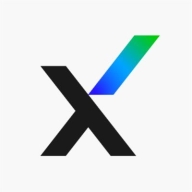

Trellix Network Detection and Response and Microsoft Defender for Cloud Apps compete in the network security and application monitoring space. Trellix seems to have an upper hand in detecting advanced threats, while Microsoft Defender benefits from strong integrations within the Microsoft ecosystem.
Features: Trellix Network Detection and Response stands out with its sandboxing technology, MVX engine, and a focus on advanced persistent threats and zero-day vulnerabilities. Its deep malware analysis capabilities exceed traditional SIEM solutions. Microsoft Defender for Cloud Apps offers strong integration with Microsoft's ecosystem, excels in application monitoring, and provides holistic security management with in-depth evaluations and alerting systems.
Room for Improvement: Trellix Network Detection and Response could improve its VM sandbox customization and integration with cloud solutions and better threat analysis management systems. Microsoft Defender for Cloud Apps may enhance its response times, integration with macOS, and provide more pre-configured reporting tools, along with better third-party solution integration and alert precision.
Ease of Deployment and Customer Service: Trellix Network Detection and Response primarily offers on-premises deployment, suitable for businesses with on-site needs but less flexible than Microsoft Defender for Cloud Apps, which supports public, private, and hybrid cloud deployments. Both products receive good support ratings, though Defender users note slightly better customer service.
Pricing and ROI: Trellix Network Detection and Response is often seen as pricey but delivers considerable ROI by reducing breach incidents. Microsoft Defender for Cloud Apps offers cost-effective pricing, especially when bundled with Microsoft 365, making it affordable upfront and improving ROI through reduced response times and increased productivity.
The biggest return on investment so far has been visibility, knowing what we have in our environment.
As a small team, Microsoft Defender for Cloud Apps allowed us to manage systems with just one or two people.
We have at least saved the costs we had from the Netskope solution this year.
Their customer service is pretty good, but it's frustrating to go through three or four channels before reaching the right person.
The support is excellent, and the speed of response is commendable.
There were instances where the engineers were knowledgeable and helpful, but at other times it felt like a ping pong game, with unnecessary transfers until the right person was found.
Technical support needs improvement as sometimes engineers are not available promptly, especially during high-severity incidents.
For what I know about the log collector and how much data it can take in, it is super scalable and capable of handling high workloads.
Microsoft Defender for Cloud Apps is very scalable, provided you have the right subscription.
In my experience, Microsoft Defender for Cloud Apps is good enough for small to medium businesses.
I would rate it a ten because I have not experienced any stability issues so far with Defender for Cloud Apps.
I would assess the stability and reliability of Microsoft Defender for Cloud Apps as stable
My impression on the stability and reliability of Microsoft Defender for Cloud Apps is that it is very stable.
For data loss prevention, it would be useful to be able to drill down into the kind of data being transferred over CloudApp.
Defender typically connects to Entra ID, but we have local users on the cloud for database access, SSH, or RDS, and there is nothing produced by Defender regarding those local IAM users.
A significant improvement I would like to see is the integration into a single pane of glass.
There should be improvements in AI intelligence, faster decision-making, and a more responsive technical support team.
The pricing for Microsoft Defender for Cloud Apps is acceptable.
My organization is currently revisiting pricing, but previously, the cost was a bit expensive, yet comparable to other solutions with similar functionalities and features.
It's not the cheapest, but also not the most expensive, placing it in the mid-level range.
The ability to sanction unsanctioned apps using Secure Score benchmarking, included in Cloud, is also beneficial.
Microsoft Defender for Cloud Apps is very comprehensive, providing a complete 360-degree view of applications within an organization.
The most valuable features of Microsoft Defender for Cloud Apps include live, up-to-date information, which provided real-time alerts.
Trellix NDR provides an essential defense by automatically responding to network incidents that firewalls may not catch.
| Product | Market Share (%) |
|---|---|
| Trellix Network Detection and Response | 5.2% |
| Microsoft Defender for Cloud Apps | 1.8% |
| Other | 93.0% |


| Company Size | Count |
|---|---|
| Small Business | 13 |
| Midsize Enterprise | 10 |
| Large Enterprise | 18 |
| Company Size | Count |
|---|---|
| Small Business | 19 |
| Midsize Enterprise | 8 |
| Large Enterprise | 19 |
Microsoft Defender for Cloud Apps is a comprehensive security solution that provides protection for cloud-based applications and services. It offers real-time threat detection and response, as well as advanced analytics and reporting capabilities. With Defender for Cloud Apps, organizations can ensure the security of their cloud environments and safeguard against cyber threats. Whether you're running SaaS applications, IaaS workloads, or PaaS services, Microsoft Defender for Cloud Apps can help you secure your cloud environment and protect your business from cyber threats.
Reviews from Real Users
Ram-Krish, Cloud Security & Governance at a financial services firm, says that Microsoft Defender for Cloud Apps "Integrates well and helps us in protecting sensitive information, but takes time to scan and apply the policies and cannot detect everything we need".
PeerSpot user, Senior Cloud & Security Consultant at a tech services, writes that Microsoft Defender for Cloud Apps "Great for monitoring user activity and protecting data while integrating well with other applications".
Simon Burgess,Infrastructure Engineer at SBITSC, states that Microsoft Defender for Cloud Apps is "A fluid, intelligent product for great visibility, centralized management, and increased uptime".
Detect the undetectable and stop evasive attacks. Trellix Network Detection and Response (NDR) helps your team focus on real attacks, contain intrusions with speed and intelligence, and eliminate your cybersecurity weak points.
We monitor all Advanced Threat Protection (ATP) reviews to prevent fraudulent reviews and keep review quality high. We do not post reviews by company employees or direct competitors. We validate each review for authenticity via cross-reference with LinkedIn, and personal follow-up with the reviewer when necessary.